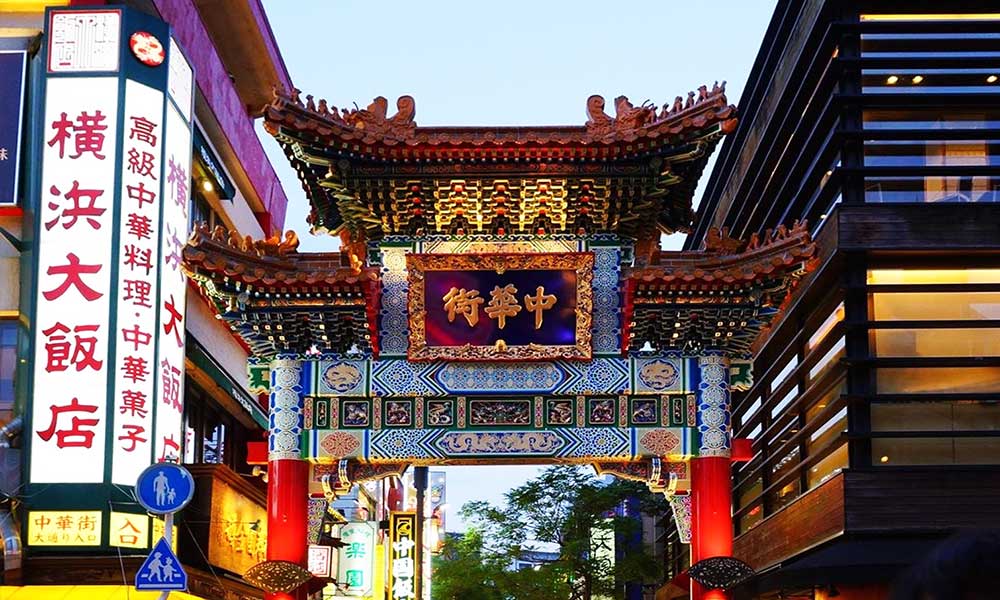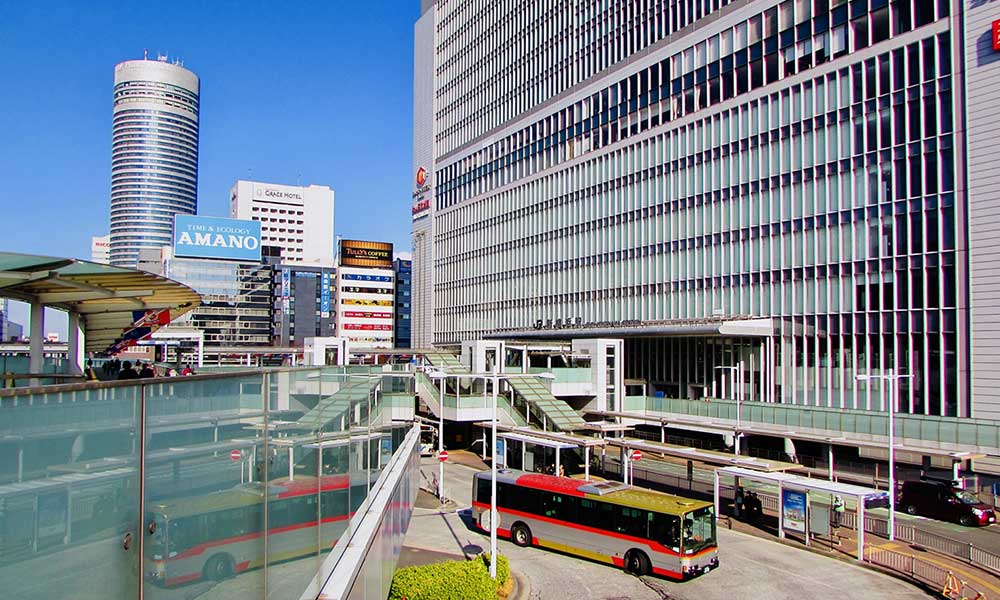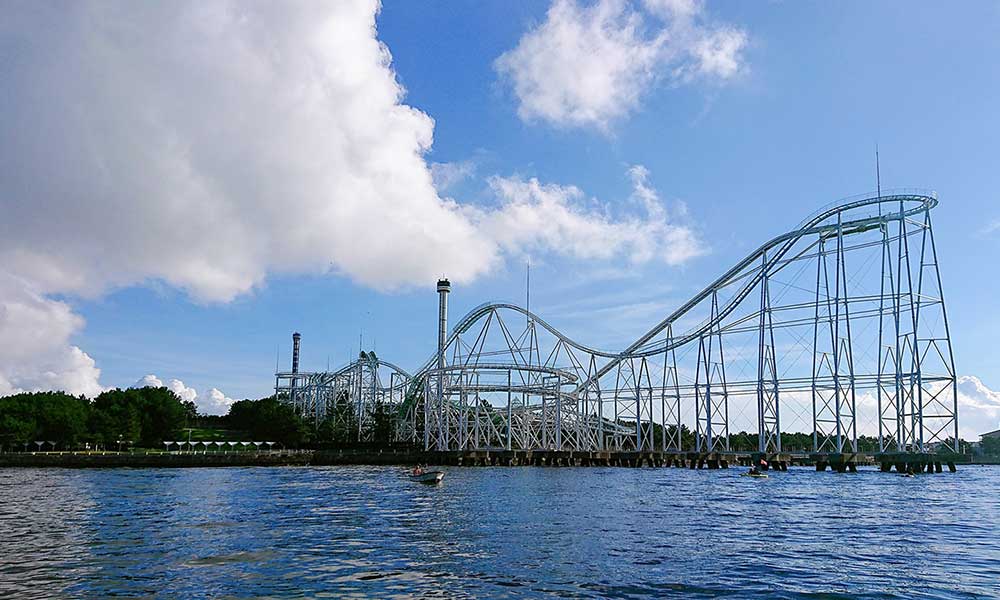Yokohama City, Kanagawa神奈川県横浜市
Living in Yokohama City, Kanagawa

We have Summarized the livability of Yokohama City, Kanagawa.
CONTENTS
- What kind of place is Yokohama City?
- Yokohama CityPR video
- How is the traffic situation in Yokohama City?
- How are the rent and land prices in Yokohama City?
- How is childcare and education in Yokohama City?
- How about shopping in Yokohama City?
- How about jobs and recruitment in Yokohama City?
- Yokohama City’s unique subsidy/subsidy system
What kind of place is Yokohama City, Kanagawa?

Yokohama City is the largest city in Kanagawa Prefecture in terms of area and population.
Yokohama City is located in the eastern part of Kanagawa Prefecture and is surrounded by Kawasaki City to the north, Tokyo Bay to the east, Yokosuka City, Zushi City, Kamakura City, and Fujisawa City to the south, and Ayase City, Yamato City, and Machida City to the west.
The population is approximately 3.771 million, and the number of households is approximately 1.783 million. (As of December 2022)
Yokohama City is the prefectural capital of Kanagawa Prefecture and is the largest city in the prefecture.
Yokohama is a government-designated city in the Tokyo metropolitan area, divided into 18 wards, the majority of which are formerly Musashi Province. Currently, it is made up of parts of the former Sagami Province, including Kamakura District, Konan Ward, Minami Ward, and Kanazawa Ward.
It is known as a city with a truly diverse range of aspects, including being one of Japan’s leading port cities, a commercial and industrial city, and a tourist city.
Historically, Yokohama is known for being the first city in Japan to trade with foreign countries when its port was opened at the end of the Edo period, and since foreign capital actively entered the city at that time, it is still a city with an exotic atmosphere, with Western-style historical buildings remaining everywhere. Many foreigners live in Yokohama, and the city has a rich international atmosphere, making it a popular city for tourists from overseas.
It is also the core city of the Keihin Industrial Zone, and is one of Japan’s leading industrial areas, with headquarters and branches of major companies lined up.
It is also a very popular tourist destination, with beautiful cityscapes facing the sea, the Minato Mirai area with its numerous entertainment options such as shopping facilities, amusement parks, and hotels, and Yokohama Chinatown, Japan’s largest Chinatown with over 600 stores, making it a city visited by many tourists on weekends.
There are many office buildings around Yokohama Station, making it a popular business hub. The city is also attractive for its international atmosphere, tourist attractions, commercial aspects, and rich food culture.
PR video of Yokohama City, Kanagawa
Every time we meet, something new Find Your YOKOHAMA
Enjoy the Port Life in Yokohama
How is the traffic situation in Yokohama City?

Yokohama City, the city with the prefecture’s largest terminal station
There are 10 train lines in Yokohama City. There are five JR lines: Keihin Tohoku Line, Negishi Line, Tokaido Main Line, Yokosuka Line, Shonan Shinjuku Line, and Narita Express, and five private lines: Keihin Kyuko Main Line, Sotetsu Main Line, Tokyu Toyoko Line, Yokohama Municipal Subway Blue Line, and Minatomirai Line.
Yokohama City, one of the largest cities in Japan, is also a bedroom town for Tokyo, and has excellent access to the city with many commuters to the city.
It takes about 30 minutes to get to major stations such as Shibuya and Shinjuku, and it is highly convenient because you can get there without changing trains as the railway companies are moving towards direct connections.
Among them, Yokohama Station is the largest terminal station in the prefecture, representing Yokohama City, and is the hub of JR, subways, and private railways. The number of railway operators that run through the station is among the highest in the country, and the average number of passengers per day is comparable to that of Shinjuku Station, Ikebukuro Station, and Tokyo Station.
In addition, Shin-Yokohama Station, a Shinkansen stop, is located here, so you can access other cities from within Yokohama without going to Tokyo Station.
There are many bus routes connecting to major stations, mainly city buses, and they are an important means of transportation for residents. In addition, express buses depart from multiple stations, and you can go to all parts of Japan, not only to neighboring prefectures but also to the Tohoku and Kinki regions. It is also convenient to get to Haneda Airport and Narita Airport, which are the air gateways, and it is about an hour away by limousine bus.
It is convenient not only for public transportation but also for car travel. There are many expressways accessible, such as the Tomei Expressway and the Third Keihin Expressway. National highways include Route 1, Route 15, Route 16, Route 246, and Route 357, which provide access not only to the surrounding areas but also to Tokyo and neighboring prefectures.
Access to the city center is very convenient from Yokohama Station, and there are many trains, so you will never feel inconvenienced. There are many lines to get to the city center, so even if one line stops, you can transfer to another line, which is very convenient.
Yokohama Station is a little far from the JR and private railway stations, so it can be inconvenient to transfer. During the morning rush hour, the platform is overflowing with people, creating a chaotic scene.
How are the rent and land prices in Yokohama City?

The highest average rent and land prices are in Naka-ku and Nishi-ku, Yokohama City
The average rent in Yokohama varies depending on the area where the property is located and the size of the room.
The most expensive 1LDK, 2K, and 2DK apartments are in Naka Ward at 131,000 yen and Nishi Ward at 127,000 yen. For 2LDK, 3K, and 3DK, Nishi Ward has the highest average rent at 256,000 yen, followed by Naka Ward at 224,000 yen, and for 3LDK, 4K, and 4DK, Naka Ward at 332,000 yen and Nishi Ward at 252,000 yen.
The average rent in Naka Ward, which is home to the prefectural office and city hall and the main national and prefectural institutions, and its twin-core Nishi Ward, is higher than in other wards.
When converted to per square meter and compared to Tokyo, it is on par with Koto Ward, Sumida Ward, and Kita Ward, and the same can be said for land prices when comparing them based on the average price per tsubo.
The most popular area for families is Tsuzuki Ward, where the average rent for a 2LDK or larger apartment is 127,000 yen, followed by Totsuka Ward at 115,000 yen.
As it is a popular area, there are many properties available, making it a fun area to choose a property. There is also high demand for condominiums within walking distance of the station, so property values do not drop much. The east side of the city faces Tokyo Bay, so there is a possibility of living in a property with an ocean view.
This area has the highest average rent in the prefecture, so if you want to live in a popular property you will need to be prepared to pay a reasonable amount of rent. The land market is also high and popular, so it is difficult to secure a large plot of land even for a detached house. In the center of the city, it may not be possible to secure a parking space on the premises, so you may want to be prepared to incur additional parking fees.
How is childcare and education in Yokohama City?

Yokohama City: A friendly environment for raising children from pregnancy through to small children
Yokohama City has 448 nursery schools, 290 kindergartens, 340 elementary schools, 145 junior high schools, 94 high schools, and 42 junior colleges and universities.
Yokohama City has an environment that is easy to raise children in. Although it is a city, there are many parks, rivers, and leisure facilities, so you can play freely with your children.
In addition, as a measure against the declining birthrate and aging population, local governments across the country are working to support child-rearing, and Yokohama City is also carrying out support projects.
The main efforts include providing a place where various information can be provided and consultations can be made, using connections between people to support child-rearing in the community, and providing a service that temporarily takes care of infants and young children regardless of the reason.
We also arrange for nursery schools and kindergartens to eliminate the waiting list for children.
There is also a system that makes it fun to go out with children. It is for pregnant women and families with children under elementary school age, and by showing your registration card at participating stores when you go out, you can receive benefits such as services, discounts, and preferential treatment.
Yokohama City: Academic ability is above average, but motivation to continue education varies by area
According to the results of the National Academic Achievement Survey, the average correct answer rate for elementary and junior high schools in Yokohama City is almost the same as the national average, or slightly higher.
However, in Yokohama City, the rate of enrollment in private junior high and high schools varies depending on the area you live in, and it is known that children living in areas that are said to be popular with the child-rearing generation in real estate information have a higher desire to go to private schools.
Such areas have many famous cram schools and prep schools around the stations, so the learning environment is good, and they are naturally easy to live in as they have childcare facilities and medical facilities, and it is easy to commute to the city, so they tend to attract young, education-conscious families with children.
Of course, such areas also have a high percentage of children who go on to top-class public high schools in the prefecture.
There are many educational institutions to choose from, so if you wish, you can receive a high-quality education within the city. Access to the city center is also good, so it is possible to commute to university from home.
There are many children on waiting lists for licensed daycare centers, and leaving your children at unlicensed centers is expensive, so it can be difficult to find a place to leave your children.
How about shopping in Yokohama City?

Yokohama City: Convenient as there are many different types of stores around the station
Yokohama is a fun shopping area with many commercial facilities. On the west side of Yokohama Station, there are department stores directly connected to the station, such as Takashimaya and Lumine Yokohama. In addition, within a 10-minute walk, you will find an area packed with electronics stores, restaurants, drugstores, and all kinds of shops. On the east side, there are also station-connected department stores like Sogo and Marui City Yokohama. About a 7-minute walk from the east exit, you can visit the shopping complex Yokohama Bay Quarter, where you can enjoy shopping while feeling the sea breeze due to its proximity to the ocean.
Furthermore, a 10-minute walk from there will take you to the Minato Mirai area, where various multi-purpose complexes are located.
Yokohama Station has many stores directly connected to the station, so you can enjoy shopping without going outside. The Minato Mirai area is not only great for shopping, it also has hotels, event spaces, hot springs, and more, and is in a great location overlooking Yokohama Port.
The area around Yokohama Station is so crowded with people that it can be confusing and confusing. On weekends, it gets very busy and noisy wherever you go.
How about jobs and recruitment in Yokohama City?
Yokohama City has a wide range of job openings, from management positions to sales positions
Yokohama City is one of the largest cities in the Tokyo metropolitan area and the center of Kanagawa Prefecture. It has a large population, so there are many job openings.
It is a city with many commercial facilities, so there are plenty of job openings in the service industry, mainly in customer service positions.
In addition, since there are corporate offices here, there are job openings for managerial positions such as department heads, section heads, and store managers, construction-related positions such as carpenters and civil engineering workers, production process positions and technical positions involved in factory lines and welding, and there are also many stores that handle clothing, so there are also job openings for sales and marketing positions.
Yokohama City, Kanagawa’s unique subsidy/subsidy system
Yokohama City, Kanagawa’s unique relocation assistance and relocation subsidy system
| Izumi Living – Information for moving to Izumi Ward, Yokohama City |
Yokohama City, Kanagawa’s unique housing assistance and subsidy system
Yokohama City, Kanagawa’s unique childcare support system
| Memorial tree for life Subsidized private kindergarten meals subsidy (for parents) Promotion of private kindergartens accepting 2-year-olds |
Yokohama City, Kanagawa’s unique system for further education and tuition assistance/subsidies
| School attendance assistance system School entrance preparation fee (for new junior high school students) Yokohama City High School Scholarship |

